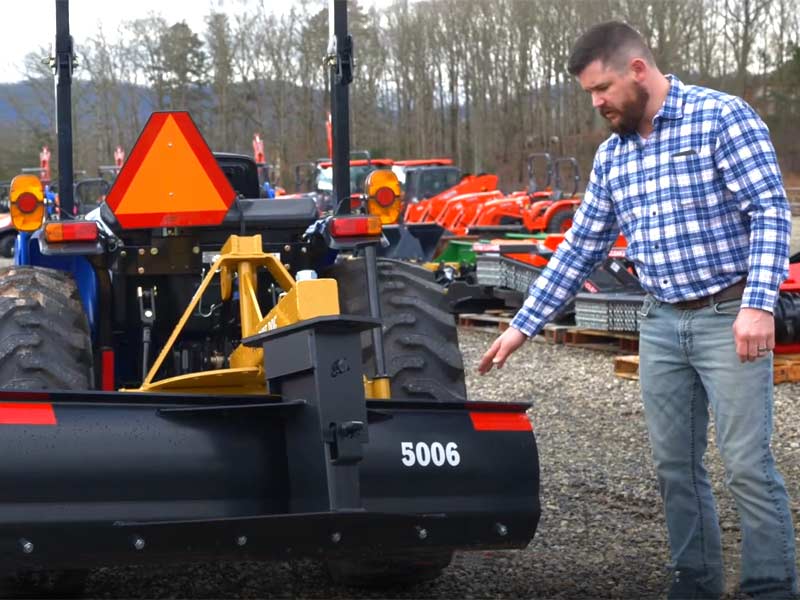When the rainy season hits, you know what that means. Heavy rain can really damage a gravel driveway. It can leave your driveway uneven, full of water-collecting potholes, and downright hazardous if ignored.
Out in the country, most people use gravel to build their driveways. It’s cheaper than other options, but it does require more maintenance than paving.
Gravel driveway repair is easier than you might think if you have a tractor and a scrape blade.
What’s a tractor scrape blade?
Scrape blades typically run between 4′ to 8′ wide and have a hard bottom edge. They hook up to your tractor’s 3-point hitch and you drag them behind to shape and maintain roadways and smooth out piles of loose stuff, like sand, rock, or gravel.
The blades are adjustable, with an angle adjustment, a tilt adjustment, and an offset. To adjust, you remove the pin, manually position the blade, and set the pin to hold it in place.
To repair your driveway, you want a scrape blade that measures about a foot wider than your tractor (from the outer tire to outer tire) to cover the area and leave your work smooth and even. For example, if your tractor is 42” wide, get a 54” wide scrape blade.
How to repair your driveway
Here are step-by-step instructions:
Tear up the driveway.
In order to make a fresh surface, you need to loosen and lift the existing material. Driveway material tends to wash out of the middle and pile higher on the sides; the exact opposite of what you want.
The first step is to loosen and redistribute the gravel from the sides to the middle. You’re going to do that with the most aggressive angle adjustment on your scrape blade, drag the surface of your driveway. As you scrape the driveway, the gravel is loosened and pulled from the sides to the middle.
Scrape down the length of the drive, then turn around and come back the other way, covering the entire surface.
Washboard areas may need several runs to loosen the material.
Level the driveway.
After you’ve thoroughly torn up the driveway, straighten your scrape blade and make enough passes to make it level and smooth.
Smooth the top layer.
For a finer finish, turn the scrape blade around 180 degrees and back drag while making another pass. This will give you a nice smooth top layer, and your gravel driveway repair is done!
Potholes are a pain!
Potholes can be persistent and may need extra attention. When a new pothole appears, scrape it out all the way to the base of the pothole, making it bigger before filling in and smoothing out.
If potholes keep coming back even after you add fill, you may need to excavate that section of your driveway with your front loader and fill in layers of gravel, compacting and smoothing each layer before adding the next.
How do you avoid persistent potholes? Regular maintenance, of course. Repair your gravel driveway at the first sign of trouble. Don’t wait until you’ve got potholes so deep your sports car driving relatives have to park at the end of the drive and hike in.









